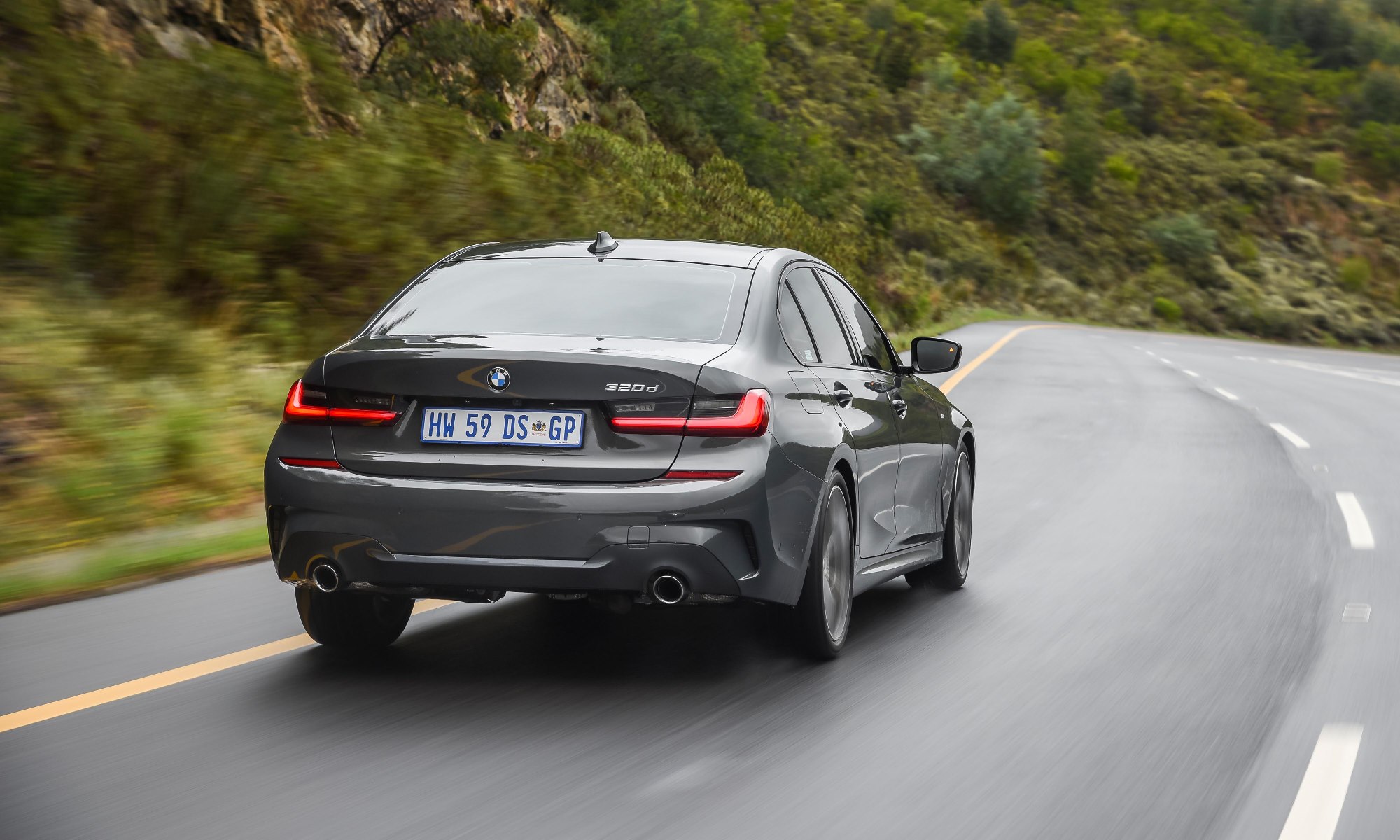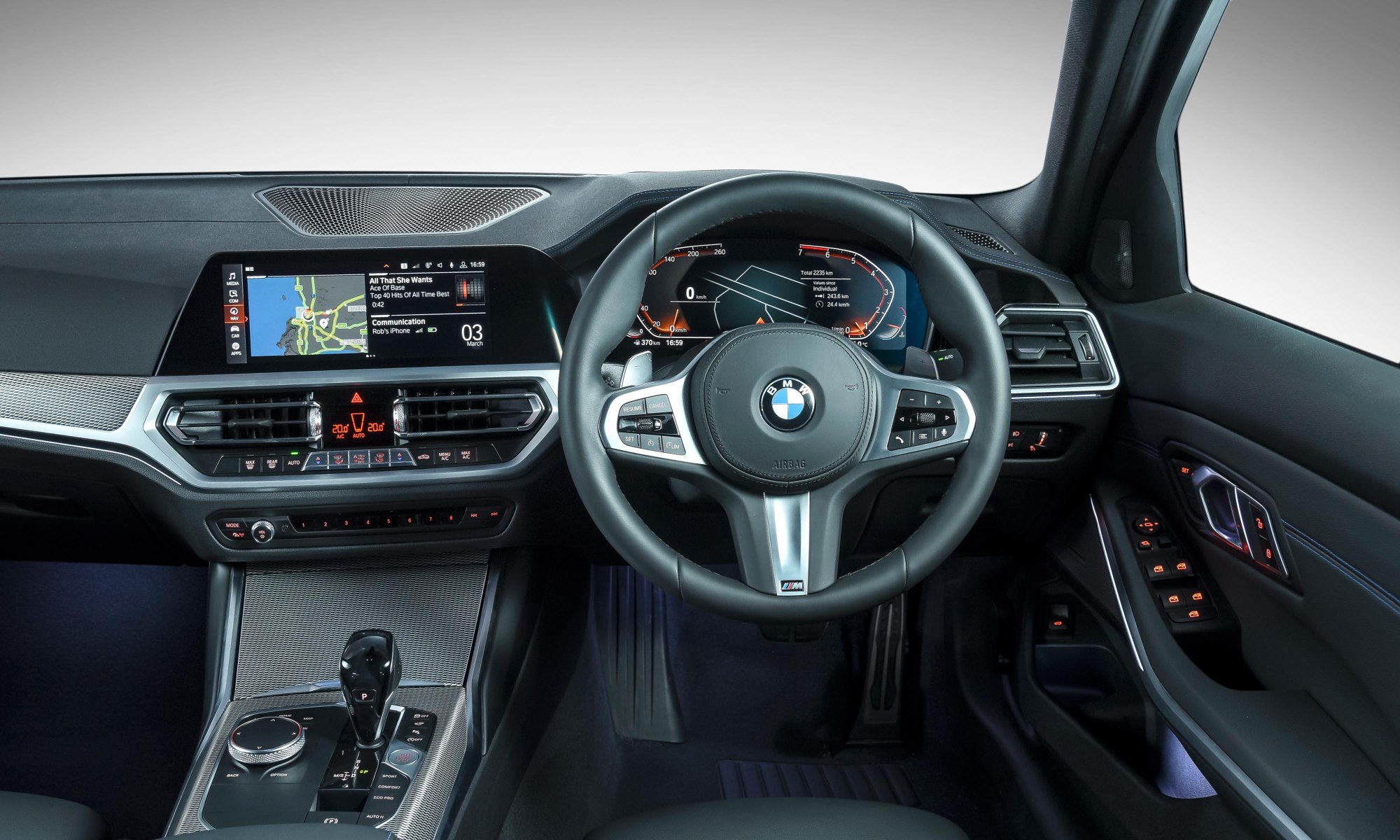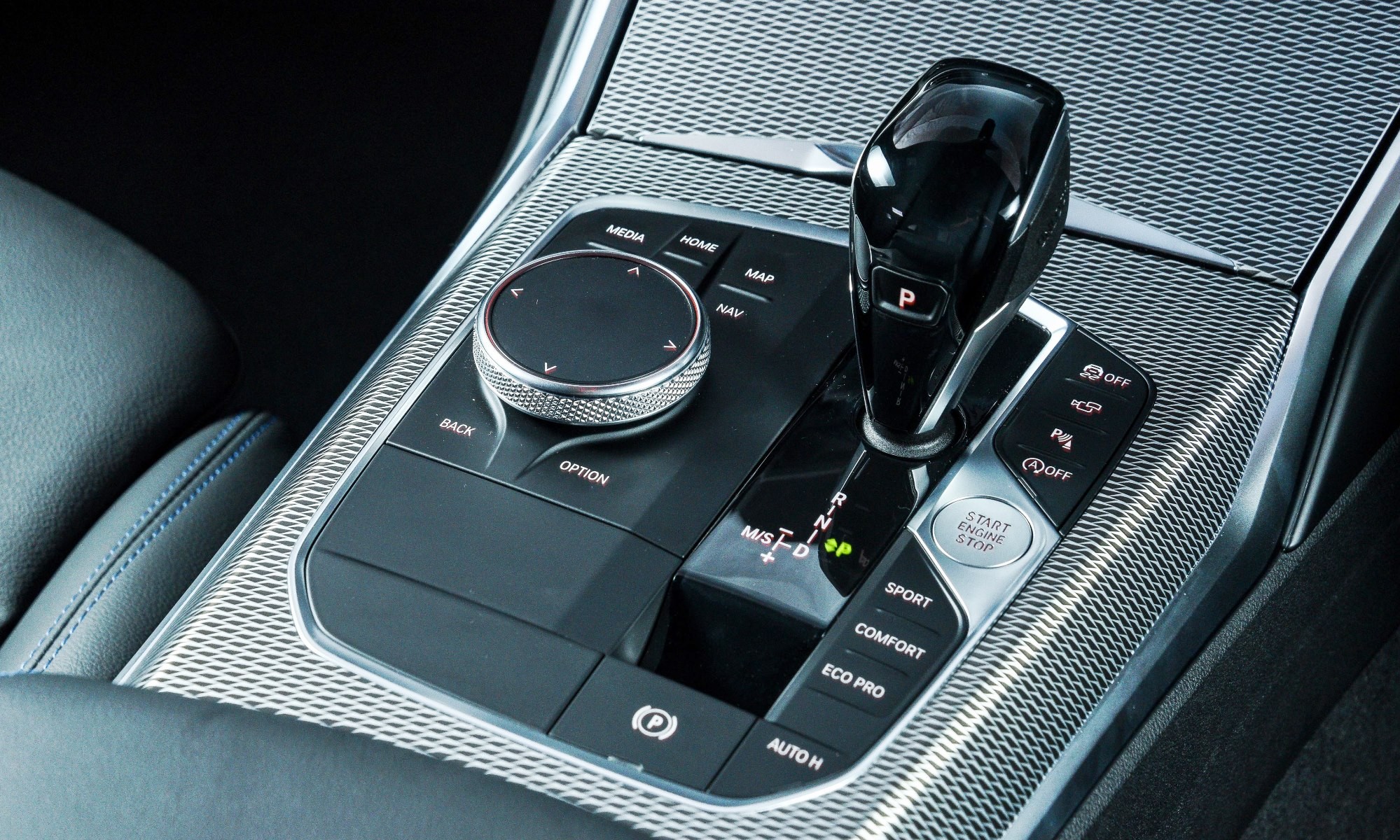The new BMW 3 Series launched into the local market this week. Double Apex attended the South African ride and drive event held in the Western Cape and reports here.
If there is one car that epitomises the BMW brand, it is the 3 Series. People tend to know what a 3 Series is, even they’ve never heard of an X1 or Z4, or have no interest in cars whatsoever. Since the badge was launched in 1975, over 15 million 3 Series units have been sold worldwide, which makes it the company’s most popular model to date.
Click here to read our X5 international launch report.
Smartly handsome
The seventh generation 3 Series is immediately identifiable as a BMW and a successor to the outgoing model. Dominating the nose are BMW’s signature kidney grilles, now flanked by prominent headlamp units, with a unique indented design element. Incidentally, the headlamps are full LED units.
A steeply raked front windscreen and sloping rear item, to emphasise its sporting character, are seen in profile. The rear view is probably this car’s least flattering. Many have said that it reminds them of a Lexus or an Audi A4. Overall the appearance is a gentle evolution of the model’s design language and the latest car is best described as elegantly muscular
You could always opt to dress up your 3 Series with one of the optional packages, Sport Line or M Sport if you find the standard appearance too ‘mainstream’. Each brings its own character in detailing and trim along with alloys match.
Larger than before
The newest 3 Series, known as G20, is the largest model to wear the famous badge. In the key areas of length, width and height it has grown 76-, 16- and 1 mm, respectively. 41 mm has been added to the wheelbase for added interior room. Front and rear tracks have grown by 43- and 21 mm.
Cleaner and less cluttered
BMW says the interior has been calmed for drivers to concentrate on the essentials. The facia is a tech-laden affair with large format colour screens ahead in the instrument cluster and centre stage. The entire ‘cockpit’ has been angled towards the driver, drivers of older 3 Series (such as the E30 generation) will be familiar with such a layout. Crucial controls are mounted on the steering wheel or close to hand.
Part of the new model’s tech upgrade includes BMW’s latest generation operating system, known as 7.0. BMW’s new Intelligent Personal Assistant (IPA) is also included, which allows you to operate many of the car’s functions via voice control. On our drive we used the IPA, it worked on occasion and plain refused at other times. We guess that a lack of familiarity with the system was more to blame than anything.
Learn more about the styling intricacies and tech on the new BMW 3 series by clicking here and here.
Under the hood
Just two derivatives of the G20 3 Series were available to drive at the launch event: a 320d and 330i. The 320d is powered by a turbodiesel motor with four cylinders. This frugal unit produces 140 kW of power and 400 N.m of torque. The turbopetrol inline four in the 330i develops 190 kW and an identical level of torque.
Other derivatives on offer immediately include a 135 kW inline four in the BMW 320i and a 330d with 195 kW on tap from an inline-six turbodiesel mill. Buyers can also opt for a higher performance M340i xDrive variant around August this year. An eight-speed automatic transmission is standard across the 3 Series range in SA.
Click here to read our Mercedes-AMG C43 driving review.
On the road
BMW was the brand that brought sporting dynamics to the executive sedan segment and it is that with which we constantly associate the 3 Series badge. BMW SA sent us on a route that comprised just about every road type on offer in the Western Cape on the ride and drive event.
The new 3 behaved in an exemplary manner on the smooth tar sections that wend their way along the Atlantic, through scenic Chapman’s Peak Drive and along the coast to Somerset West. Refinement levels are high and cabin noise levels are low, both desirable traits when trailing slow-moving afternoon traffic. Primary ride quality on the motorways outside of the urban sprawl is also highly commendable. The G20 3 rides with a high level of comfort.
If we have any criticism it is that that pockmarks and sharp road imperfections, especially in quick succession, aren’t dealt with well. There are sections of tar in the Cape CBD that have been rippled by heavy vehicles, these really set the suspension aflutter. 19-inch alloys on low-profile rubber, as fitted to the launch, cars did not help either.
Dynamically adept
BMW saw fit to include a few mountain passes into the equation, to highlight its sporting sedan DNA, in this arena, the 3 Series shines. The G20 has lost none of the sportiness that its badge has come to exemplify. A sharp, if lifeless, steering action allows one to really attack a set of corners with precision. Grip levels are high for cars that aren’t the sports derivatives (ie the M340i or eventual M3), with driver over-enthusiasm suppressed by gentle, tyre-squealing understeer.
Click here to read about the power rating of the upcoming BMW M3 and click here to read about forgotten BMW M3 concept cars.
We drove both derivatives on offer at the launch on exactly the same route, given the choice, and as they cost the same, I would recommend the 320d over the 330i.
Summary
When BMW launched the 3 Series all those decades ago, there was no Mercedes-Benz C-Class, no Audi A4 and Lexus, as a brand, didn’t exist, essentially BMW had the niche to itself. Since then competition from all corners has meant that BMW has had to constantly lift its game to stay at the top of its class, and it has.
This 3 Series feels like a more grown-up and polished version of the car it replaces, it loses none of its original character, but ratchets up a few notches. We cannot wait to drive the high-performance versions when they eventually arrive.
Pricing
BMW 320d/330i: R649 000









![[UPDATED] Mazzei Formula Five Is One Man’s Obsession](https://doubleapex.co.za/wp-content/uploads/2024/08/Mazzei-Formula-Five-500x383.jpg)
Leave A Comment